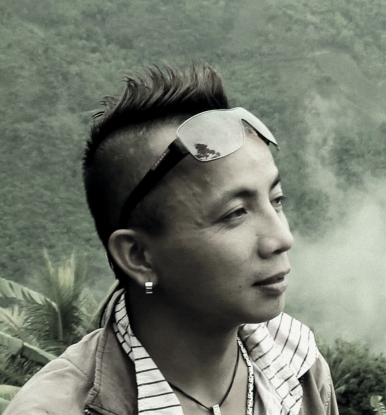When an earthquake struck, mountain guide Robbi Sapinggi‘s first instinct was the safety of the hiker under his care

Malaysia's highest peak, Mount Kinabalu, is aloof but accessible. Shrouded in mists and rising 4,095 metres above the rainforests of Malaysia's easternmost state, Sabah on Borneo island, it maintains an air of mystery and legend. But every year, hundreds ascend its peak.

Robbi Sapinggi's job took him up the mountain regularly. Like his father and brothers, he was a mountain guide. Kinabalu was the centre of his life. He was born at its foothills, met his wife on its slopes and had spurred numerous hikers through the hardest parts of their climb to its peak.
With his quick smile and encouraging words, he was popular. Julie Ronnie Bindaron, his friend and colleague at the travel firm Amazing Borneo, remembers his charm and sunny personality. “He could turn a fussy guest into a happy guest,” she said, describing him as the type of guy who brought you breakfast and listened to your troubles.
One guest recounted how Robbi had given her his gloves and jacket when temperatures tumbled during a climb, leaving him in just a T-shirt. “That was just the kind of person he was,” said Catherine Jayasuria from Coalition Duchenne, a charity raising awareness of that particular form of muscle dystrophy.
For most, the climb to the peak of Mount Kinabalu takes two days. On the first, hikers climb to just over 3,000 metres to rest, heading out again in the wee hours the next morning to reach the summit before starting their descent.

Robbi was guiding Thai student Khunakorn Kocharint at 7.15 am on 5 June 2015 when an earthquake measuring 5.9 on the Richter scale struck. At a depth of 10 kilometres, the epicentre was 19 kilometres northwest off the town of Ranau, not far from the mountain. On Kinabalu, the force of the quake dislodged rocks and sent them raining on trekking routes. Trails disappeared amid landslides and heavy fog. Hikers, out since the early hours of the morning, were trapped.
According to newspaper reports, Robbi and his charge had already reached Kinabalu's highest point, Low’s Peak, and were descending when the ground shook and rocks came hurtling down. Both Kocharint and Robbi were hit, with the former falling unconscious. When he woke, Robbi was still by his side though injured. Robbi told Kocharint to make a run for it. The 20-year-old student made it to safety but Robbi suffered fatal injuries. His body was found later, close to where he was hit.
Eighteen people died on the slopes that day, including four guides. The disaster was unprecedented in Sabah, which is situated some distance from earthquake-prone plate boundaries. Kinabalu, part of a UNESCO World Heritage site, was closed off to climbers for about six months to facilitate repairs and safety measures.
Robbi was 31 when he died. He had recently become a father and had been looking forward to his life with his British wife and young son before his tragic death. Tributes poured in for the popular guide after his passing.

Another colleague, Lynn Tiang, a director at Amazing Borneo, spoke about the deep gratitude felt by the Thai architecture student Robbi had saved. “(Kocharint) came back to pay his respects and to contribute the prize money he had won in an architecture design contest to Robbi’s family.”
Kocharint's message on the travel review site TripAdvisor says it best, “Thank you to my hero Robbi”.
The documentary Luka Luka Kinabalu on the effect of the 2015 earthquake on the lives of the people of Ranau is showing onboard. Check your in-flight entertainment guide for channel information.









